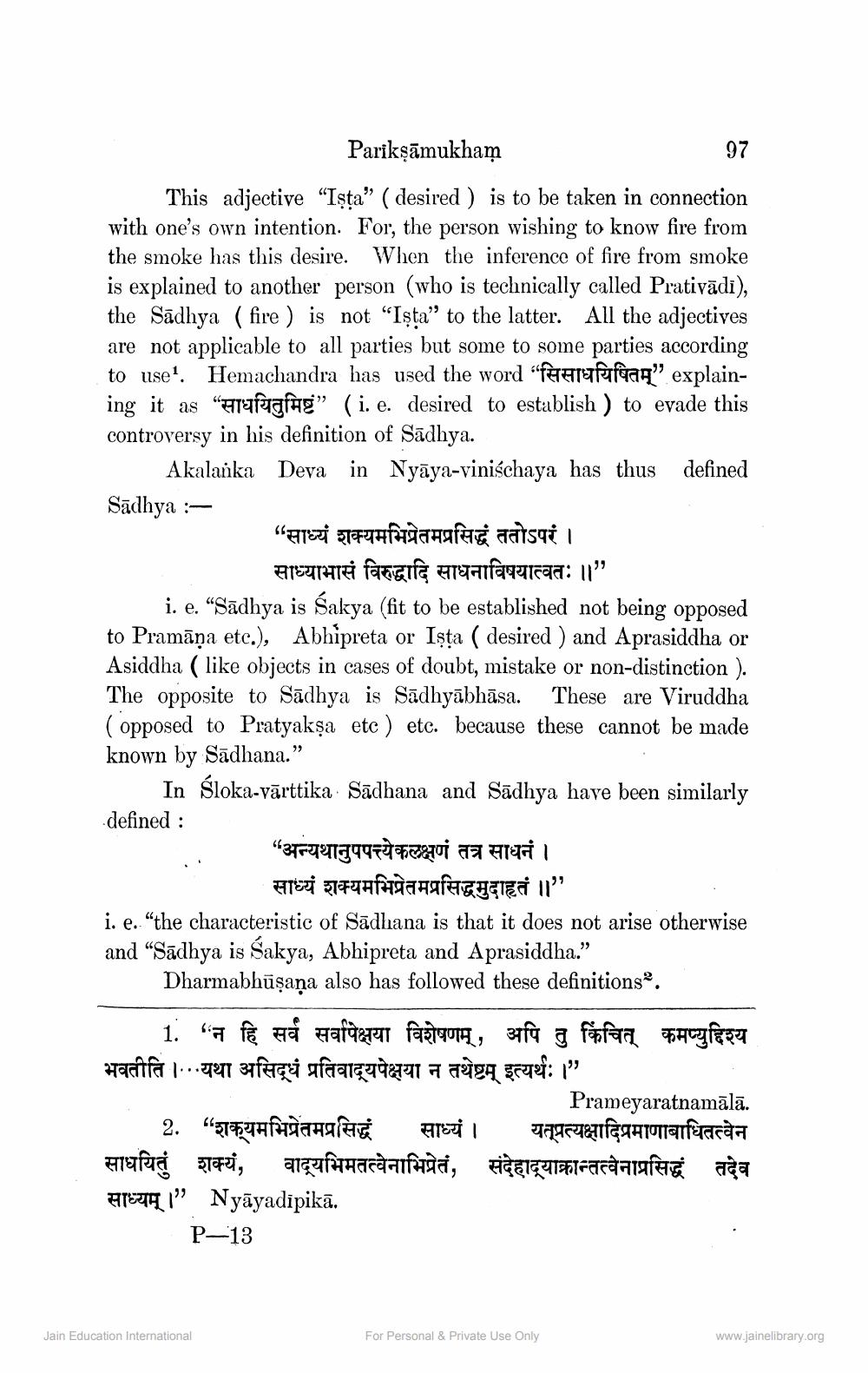________________
97
Parikşāmukham This adjective "Ista" ( desired ) is to be taken in connection with one's own intention. For, the person wishing to know fire from the smoke has this desire. When the inference of fire from smoke is explained to another person (who is technically called Prativādi), the Sādhya (fire ) is not "Işta” to the latter. All the adjectives are not applicable to all parties but some to some parties according to uset. Hemachandra has used the word "सिसाधयिषितम्" explaining it as “साधयितुमिष्टं” (i. e. desired to establish) to evade this controversy in his definition of Sādhya.
Akalanka Deva in Nyāya-viniśchaya has thus defined
Sādhya :
"साध्यं शक्यमभिप्रेतमप्रसिद्धं ततोऽपरं ।
साध्याभासं विरुद्धादि साधनाविषयात्वतः ॥" i. e. “Sadhya is Sakya (fit to be established not being opposed to Pramana etc.), Abhipreta or Ista ( desired ) and Aprasiddha or Asiddha ( like objects in cases of doubt, mistake or non-distinction ). The opposite to Sādhya is Sādhyābhāsa. These are Viruddha ( opposed to Pratyakşa etc) etc. because these cannot be made known by Sādhana."
In śloka-vārttika Sādhana and Sādhya have been similarly defined :
_ “अन्यथानुपपत्त्येकलक्षणं तत्र साधनं ।
साध्यं शक्यमभिप्रेतमप्रसिद्धमुदाहृतं ॥" i. e. "the characteristic of Sadhana is that it does not arise otherwise and “Sādhya is Šakya, Abhipreta and Aprasiddha."
Dharmabhūşaņa also has followed these definitions”.
1. “न हि सर्व सर्वापेक्षया विशेषणम् , अपि तु किंचित् कमप्युद्दिश्य भवतीति । यथा असिधं प्रतिवादयपेक्षया न तथेष्टम् इत्यर्थः ।"
Prameyaratnamālā. 2. "शक्यमभिप्रेतमप्रसिद्ध साध्यं । यत्प्रत्यक्षादिप्रमाणाबाधितत्वेन साधयितुं शक्यं, वायभिमतत्वेनाभिप्रेतं, संदेहायाक्रान्तत्वेनाप्रसिद्धं तदेव साध्यम् ।" Nyayadipika.
P-13
Jain Education International
For Personal & Private Use Only
www.jainelibrary.org




